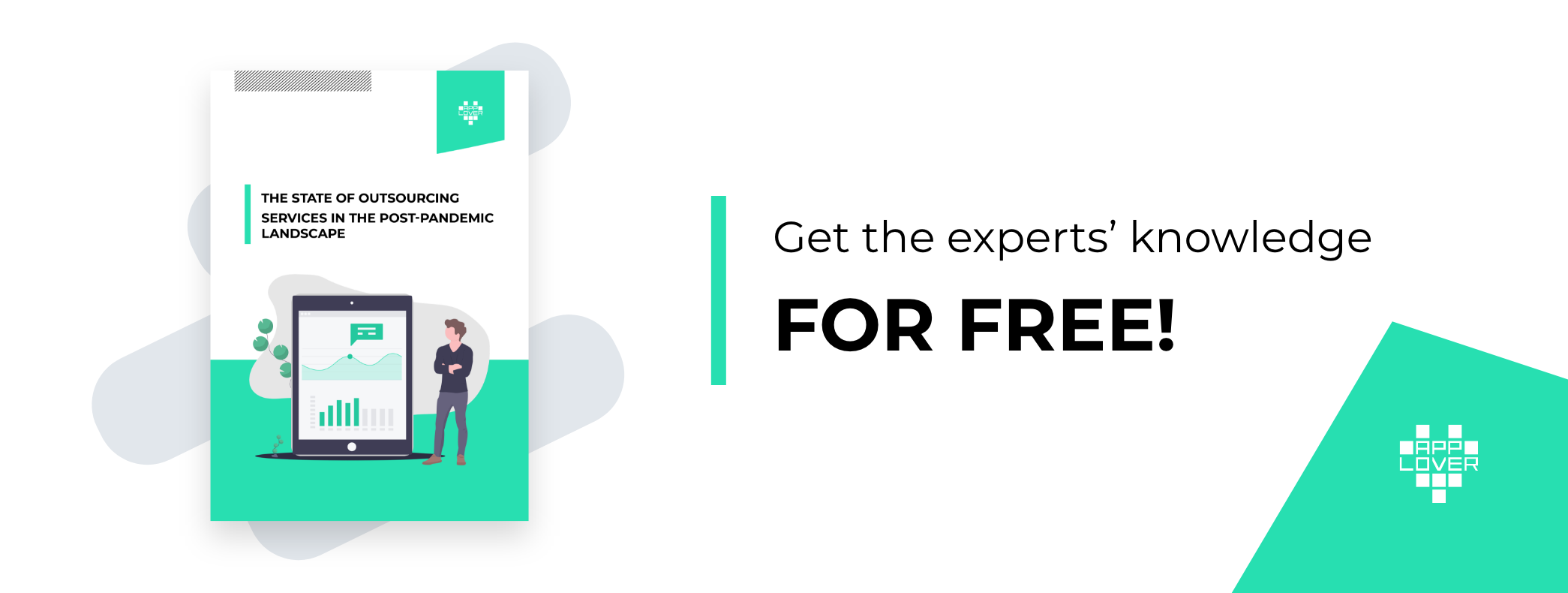What is gamification?
Gamification is a trend in User Experience management that started being applied by businesses in the 1970s. While there is no single definition, what gamification is essentially inducing experiences characteristic to games in otherwise a non-gameful context. For example banking, online shopping, reviewing restaurants. It is done to create more engaging products and services. But when talking about gamification we need to understand the distinction between game experiences and game mechanics. Why is it important regarding your new app or website? Because if you want to influence your users then we have to give them something that is psychologically valuable to them. Mechanics themselves are not something people crave on their own.
How to take the advantage of gamification?
It’s the experience these mechanics can induce that appeal to individuals. And that is why anyone attempting to gamify their service should think about how they want to change users’ experience first and then which tools to use. Many companies can boast with the successful usage of such implementations. For instance, Aetna, American healthcare enterprise, used gamification to successfully boost daily healthy activities by 50%, plus an average of 14-minute website engagement. Samsung Nation, the tech firm’s global social rewards community, uses a gamified system that helped achieve a 500% rise in customer product reviews and a 66% increase in site visits. Domino’s Pizza’s gaming app Pizza Hero, which allows clients to create (design) their pizza, helped the company increase sales by 30%.

Increase the number of your customers
People like apps that are intuitive and most important: fun to use. If you let users benefit from inviting and interacting with friends in your app it will generate you more users. Word-of-mouth is one of the most powerful forms of advertising. Wouldn’t you rather recommend your office colleague a banking app that you actually liked over the one which seemed tedious? Recent trend is people trust more what others say about the services and products their friends or family are using. Sure a good product or service is a great advertisement in its own, but you can go a step further. The well-known practice is to reward users, for example with some additional features similar to what Duolingo does. You get 7 days of premium access for every friend you recruit!
Gamifying user experience reduces churn
Those who played computer games know well that games often offer some sort of a tutorial. A safe space where you can get to know game mechanics and the game itself leads you through it in the easiest possible way. Creating a game-like tutorial, or showing the user their progress in accomplishing their in-app goal is a desirable feature. It can help reduce the number of customers resigning half-way through the process your app is designed for. Be it ordering a meal, having a lesson online or investing in market stocks. For example, online stores show a progress bar during the finalization of transactions.
Customers spend time with an application that uses gamification elements
Folks who check their apps daily spend more time with it overall. Games use that for a long time now. It is called “a first win”. In the gaming industry, it means that the first time you win a game every day means a little reward. It gives them a slight bump in motivation to visit it at least once to get that sweet sense of profit for a modest price of just playing one game. And at the same time wouldn’t it be a waste to reject that? Do you like losing things? Nobody does. Afraid of giving away stuff for free? Yes, it can be costly, but don’t worry. You can do it in a cheaper way! For example, some apps use a form of “lottery” – like an in-app scratch card, that gives you a good deal every now and then. All one has to give away then is a chance of winning. Let’s say the chance is 1 to 10. That means the cost of the stuff given away for free dropped ten times. Simple, isn’t it? For instance, Lidl, which is a global discount supermarket chain, uses a mobile app that has scratchcards, anyone can win that satisfying -30% on a cup of yogurt. And what a thrill!

Gamified user experience builds users’ emotional bond with app
How to win with competitors who offer pretty much the same product or service you do? Let’s have a look at the car industry. It is really hard to get ahead because no groundbreaking mechanical innovations are made at the moment. Cars (in the same price range) are optimized very well, so how do automotive industry players try to get customers’ attention? By getting on their emotional side. We can see that in every TV commercial, where all we see is pretty much a picture screaming “you will LOVE this car”. It’s not about calculated economical differences between vehicles, it’s about how you feel about a brand and a model. Some apps are less likable, some are more. How can a mobile app invoke emotions with its users? For example by setting a narrative. Giving a broader context to the use of this particular app. For example, instead of getting cheaper meals, you can become part of a community that helps prevent waste of food. Yeah, there is an app for that. Instead of just rating places you visit, wouldn’t you rather be an explorer, like a modern-day urban nomad? Foursquare is your little buddy, you take on every adventure, even if that means a restaurant two blocks away.
Actually all of these goals are somewhat interconnected and multiple of them can be accomplished with the same mechanics. So what is gamification all about?
Why do you want to do that in regards to your digital product?
Games have existed since forever and they are a form of leisure. I doubt there is a person reading this who has not experienced playing a video game, a board game or a fun party game. Can you remember being immersed in it so that a few hours have passed and you didn’t even notice when? On the other hand. Can you remember sitting at a boring lecture at school or filling a particularly boring form? Time sure drags then, and let’s find out why. A simple answer is fun. Yes, it seems obvious. But what is not obvious is what lies underneath this word in the context of games. Let’s have a closer look at the needs which we all have that games can satisfy.

Which psychological drives do games use and you should too?
Accomplishment
Computer role-playing games are pretty much made of quests. These are in-game tasks, like slaying a monster or finding a lost item. When players complete the mission they are often rewarded. Lots of these games are very similar in what the challenge is, and it tends to be repetitive. Yet players spend hours daily doing this. Why? Because they were challenged to do it. And oftentimes rewarded. Every day we fulfill tasks in real life. Be it buying milk, writing an article or cooking dinner. In a sense, it is not different from doing the same thing in a video game, over and over again. When we do this stuff, it is desirable to the brain reward system to get some sort of gratification. For example a compliment from our family members or teammates at work. Such reward sets off a brain reaction that makes us feel satisfied. And it feels especially good when it feels well earned.
Doing something extraordinary, accomplishing a difficult task makes a reward even more meaningful. You can use that in gamification. Instead of assuming users of your product or service will just do that as their duty – go out with an initiative. Challenge them to do something, and reward them, even if the reward itself is not a big deal. It can be an eye-pleasing animation (which is a strong current UI trend), or even a personalized “good job” message. It’s the fulfilled quest that gives that reward meaning.
Achievement
A special case of achievement is mastery. We develop constantly through all our life. Completing each step is satisfying, be it cooking, learning a new skill or lowering our carbon footprint. But the pursuit of perfection has a flavor of its own. Mastery is a form of constant accomplishment. We like getting better at things that we do. So let’s consider fitness for example. Do you run? If so, wouldn’t you like to beat your old records this year? Fitness apps can bring competition between your old self and your current self up. Points and other virtual currencies do well in this case. Are you familiar with Duolingo’s crowns, which mark numbers of lessons completed – indicating mastery of the language?

Empowerment
It’s all about control. People like to play games because they can make decisions. Draw a card or pass while playing blackjack? Make the next player in Uno draw that extra card or not? These are simple examples but there is much more to it. For example, in computer games, people can choose a fraction, a class, build their own character, a house or even whole cities. Well, the massive hit game Minecraft allows players to build whatever they want. And people are going crazy about it. So why not use that mechanism to your advantage? For example, popular game Stardew Valley is a farming simulator where players create their own farms, and while grinding repetitive tasks, they do this because the game lets them put their own vision into life. Another excellent example is the Nintendo company, and it’s a funny one. While it’s a game manufacturer – let’s consider making games instead of playing games. Making games is just a non-game experience. But Nintendo let the players create their own levels with Mario Maker and they started doing Nintendo’s job for free, creating content for other players. Allowing people to create new things exactly how they want it by either rearranging premade assets within the boundaries you set or from scratch.
Individuality
It can also assume a form of self-expression. Universally users love to show off who they are, embody their individuality in virtual reality. Creating an online avatar, or customizing how the app looks for each user are very simple and low-cost solutions. But there are many more creative opportunities for your business, that just have to be tailored right! A well-known dating app lets you link a song you like, to show who you are or attach your Instagram account (which is one enormous form of expressing oneself). Duolingo allows you to pick one of three unlockable outfits for their owl mascot Duo, who appears on the screen repeatedly. User empowerment and self-expression can be used in a vast variety of applications, not only business-to-consumer.

Risk
What is also thrilling about games is the element of unpredictability. It can be well observed in casinos, which are thriving no matter the time. Our curiosity is always telling us to see what will happen next. And when there are stakes at hand this effect is much stronger. When you can win or lose something of value to you depending on the outcome of a throw of a dice, or the next card to be drawn. Placing a bet within an app, or putting in some level of randomness, like a little lottery where you can win your own personal discount can be a thing to go. For instance, Duolingo offers you to place a bet that lets you win or lose their virtual currency depending on whether or not you can keep your learning streak for 7 days.

Possession
Who doesn’t like owning stuff? The hitch is it doesn’t need to have any material value. It can take a form of points and badges. US scouts found that out as early as 1913 and it is considered to be the first implementation of gamification.
What do we value most? Things that are rare. Limited collections of Adidas clothes are sold at prices that do not justify the quality of the product. Scarcity is a value itself. It can be in gamification as well. Having a virtual badge that others don’t is much more attractive than having a badge that everyone has. But wait, there is more! Having a privilege that others don’t is even better. American airlines figured this out a long time ago, and instead of mileage program that was pretty costly (for a certain amount of flights you got something for free) they offered the loyal customers that brought them best revenue VIP privileges, which allowed to be treated in a special way, and it turned out to be more effective.
What is also connected to the psychological phenomenon of possession is fear of loss. Some apps (e.g. Steppie) allow users to have streaks of doing certain activities like having walked a number of steps in a day. Losing that streak triggers the same reactions in the brain as losing a material good does. In order to prevent it, users are motivated to take up actions that keep the streak going. It might mean taking another lesson, walking another five thousand steps that day or posting a picture.
Contact
Do you want to find out more about UX trends?
Talk to our team!The blueprint for gamification as part of your user-driven design
User experience is a branch of knowledge between cognitive psychology and IT engineering. Its goal is to effectively influence how customers interact with your software to your advantage – how they think and what they do while using it. Points, badges and leaderboards are great ways to have an impact. It is hard to find an app that doesn’t incorporate those. Why? Because these game mechanics dwell on satisfying the needs we mentioned earlier. Points give users a sense of achievement and gratification. Badges appeal to the need of ownership and standing out and leaderboards allow people to compete and feel the risk of being better or worse than other consumers of your app. All these things affect users’ experience, compelling them to put in more time, effort and resources into interacting with your software. And that is your goal. Is there more to gamifying your app? Of course, there is.
Gamification has a wide variety of tools at its disposal, which can be modified and creatively adapted. A couple of them were already mentioned earlier. Creating a narrative of being a hero, story-telling, in-app social interactions, learning-curve, leveling up, freedom to build their own interfaces, and that is just to name a few. With an experienced team, we can help you choose the best one and introduce it to your business. Most commonly, we do so during workshops with our clients, but you can learn more about our process here.




